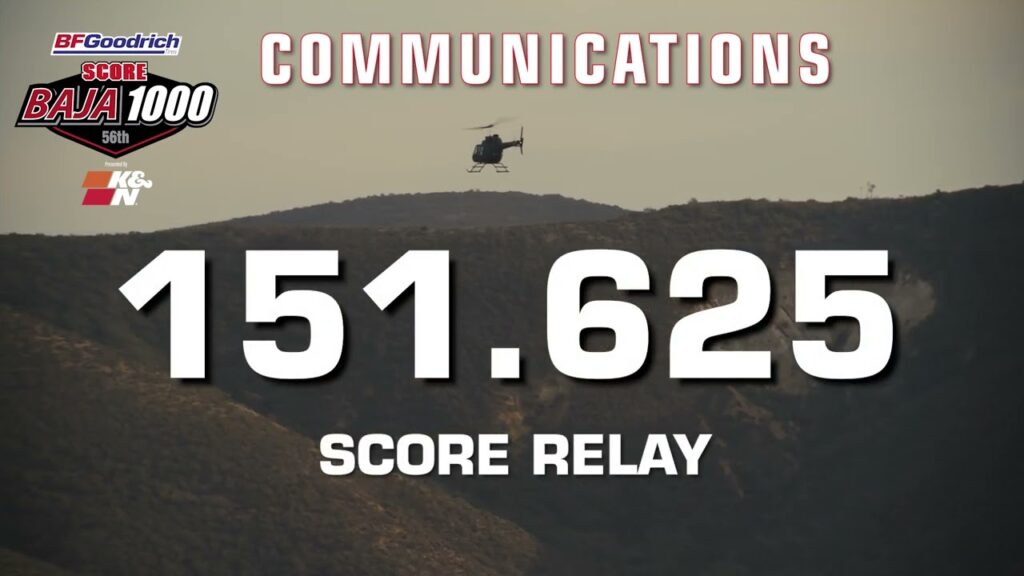The Role of Medical Helicopters in SCORE Baja 2015
The Baja 1000 is an event that tests the limits of racers as they navigate one of the most arduous terrains offered by the Mexican Baja California Peninsula. However, it is not only the competitors who face the challenges presented by the harsh landscape. Medical helicopters play an indispensable role in ensuring the safety and rapid medical response for all participants. During the SCORE Baja 2015, these airborne ambulances were a lifeline for racers in critical situations.
In this grueling rally, accidents and medical emergencies are not uncommon, given the rough nature of the terrain and the high speeds at which vehicles travel. For this reason, the presence of medical helicopters at the SCORE Baja 2015 was of paramount importance. These aircrafts were equipped with the latest technology and a highly skilled medical team ready to provide life-saving measures at a moment’s notice. Quick response times can mean the difference between life and death, and medical helicopters shortened the distance between remote locations and vital medical facilities.
Pilots of these helicopters hold extensive experience and knowledge of the Baja region. They are familiar with the unique challenges of navigating through this landscape, thus ensuring timely and efficient rescues. During the SCORE Baja 2015, the coordination between ground teams and medical helicopters allowed for seamless operations. Their ability to communicate effectively was a critical factor in executing prompt evacuations and delivering necessary medical care.
Emphasizing safety, the medical helicopters were an integral part of the race’s emergency management plan. They provided aerial surveillance to track incidents as they happened, thus allowing ground support to be deployed rapidly. The onboard medical teams had a comprehensive set of emergency medical supplies enabling them to stabilize and transport injured racers to the nearest hospital for advanced care.
The SCORE Baja 2015 highlighted the extreme importance of medical helicopters not only as a means of emergency evacuation but also as a deterrent to potential tragedies. Knowing that a medical helicopter was always on standby, racers felt a level of reassurance, allowing them to focus on the race knowing they had a safety net in the skies. While the pilots and medical staff may not have been racing alongside the competitors, their vigilant oversight and readiness to spring into action were critical to the overall success and safety of the event.
Inside the SCORE Baja 2015 Medical Rescue Operations
The SCORE Baja 1000, known for its grueling terrain and extreme conditions, poses a significant challenge not just for participants but also for the medical teams tasked with ensuring their safety. Throughout the 2015 edition of this legendary off-road race, helicopter medical rescue operations played a pivotal role in providing rapid response and evacuation capabilities. Using a fleet of specially equipped helicopters, the medical team was able to reach accidents swiftly, often in areas inaccessible to ground vehicles.
Dedicated helicopter pilots, alongside flight paramedics and rescue personnel, stood on high alert, ready to be dispatched at a moment’s notice. These teams conducted constant surveillance over the vast race course, which traversed across the Baja California Peninsula. Their vigilance was critical, allowing for immediate action when emergencies occurred. The helicopter units were crucial in performing not only rescue operations but also in swiftly transporting critically injured racers to the nearest medical facilities.
Communication and coordination were paramount for the success of the helicopter medical rescue teams during the SCORE Baja 2015. With the use of advanced avionics and GPS technology, they could maintain contact with race officials, ground ambulances, and hospital bases. This high level of integration enabled a cohesive and effective response system, demonstrating that despite the inherent risks of motorsport events, the commitment to racer safety is unwavering.
How Medical Helicopters Enhanced Safety at SCORE Baja 2015
In the rugged terrain of the Baja Peninsula, medical emergencies during high-speed races like the SCORE Baja 2015 pose significant challenges. With the introduction of dedicated medical helicopters, the organizers took a substantial leap in enhancing participant safety. These aerial vehicles provided a rapid response solution that drastically reduced the arrival time of medical assistance to injured drivers and co-drivers.
The usage of medical helicopters enabled emergency medical teams to surveil the long stretches of off-road track more effectively. In an event where seconds can mean the difference between life and death, this eye-in-the-sky approach allowed for real-time monitoring of accidents and quick evaluation of the most critical situations requiring immediate attention.
Advanced medical equipment onboard the helicopters ensured that life-saving measures could commence immediately during transport to the hospital. Not only did this include advanced trauma life support, but it also covered a range of emergency medical procedures that could be performed mid-air, significantly improving the chances of recovery for severely injured participants.
With communication being vital during such events, the helicopters were equipped with state-of-the-art communication systems. This allowed for seamless coordination between the race organizers, ground medical teams, and the nearest hospitals. As a result, the logistics of providing quick and efficient medical care were greatly streamlined.
Medical helicopters at SCORE Baja 2015 served as a deterrent for potential accidents as well. Their mere presence and the knowledge that medical assistance was readily available in the air provided racers with a sense of security. This led to more responsible driving as competitors were made aware that every segment of the race would be carefully monitored from above.
SCORE Baja 2015: A Closer Look at Helicopter Rescue Missions
The SCORE Baja 1000 is one of the most grueling off-road races in the world, taking place each year on the arid terrains of Mexico’s Baja California Peninsula. In 2015, as racers battled the unforgiving landscape, the role of helicopter rescue missions became a spotlight of attention. These aerial units, often overlooked, are critical for ensuring the safety of the participants during the intense competition.
Strategically Positioned for Rapid Response
During the 2015 race, helicopters were strategically positioned along the course to ensure swift response times in the event of an emergency. With the vast expanses of the Baja desert stretching for miles, quick access by land is often not an option. Helicopter crews must be ready to launch at a moment’s notice, as every second can be the difference between life and death in the high stakes of off-road racing.
A Multitasking Aerial Fleet
The helicopters deployed for the SCORE Baja 2015 had a multifaceted role. They served not only as rescue vehicles but also played parts in race observation, media coverage, and sometimes even as a guide for lost or disoriented racers. The pilots are highly skilled professionals, adept at navigating the harsh Baja terrain from above while remaining vigilant for any signs of trouble on the ground.
Coordination with Ground-Based Teams
The success of helicopter rescue missions relies heavily on seamless coordination with ground-based support teams. Communication channels must remain open and clear, as precise information on the racer’s location and condition is crucial. The ground crews are also vital, as they prepare for the arrival of the rescued individual, often setting up emergency medical services in anticipation of their needs upon landing.


